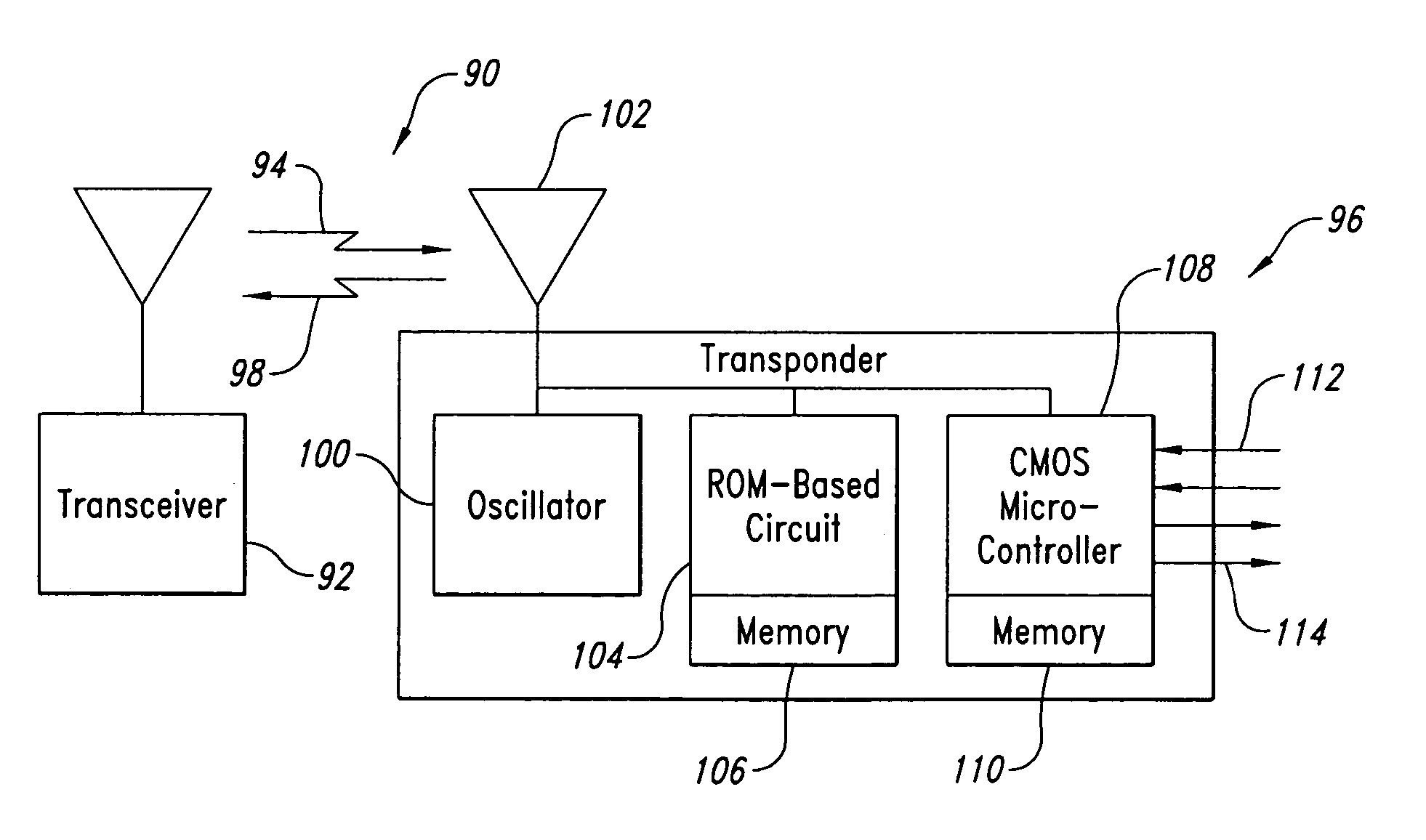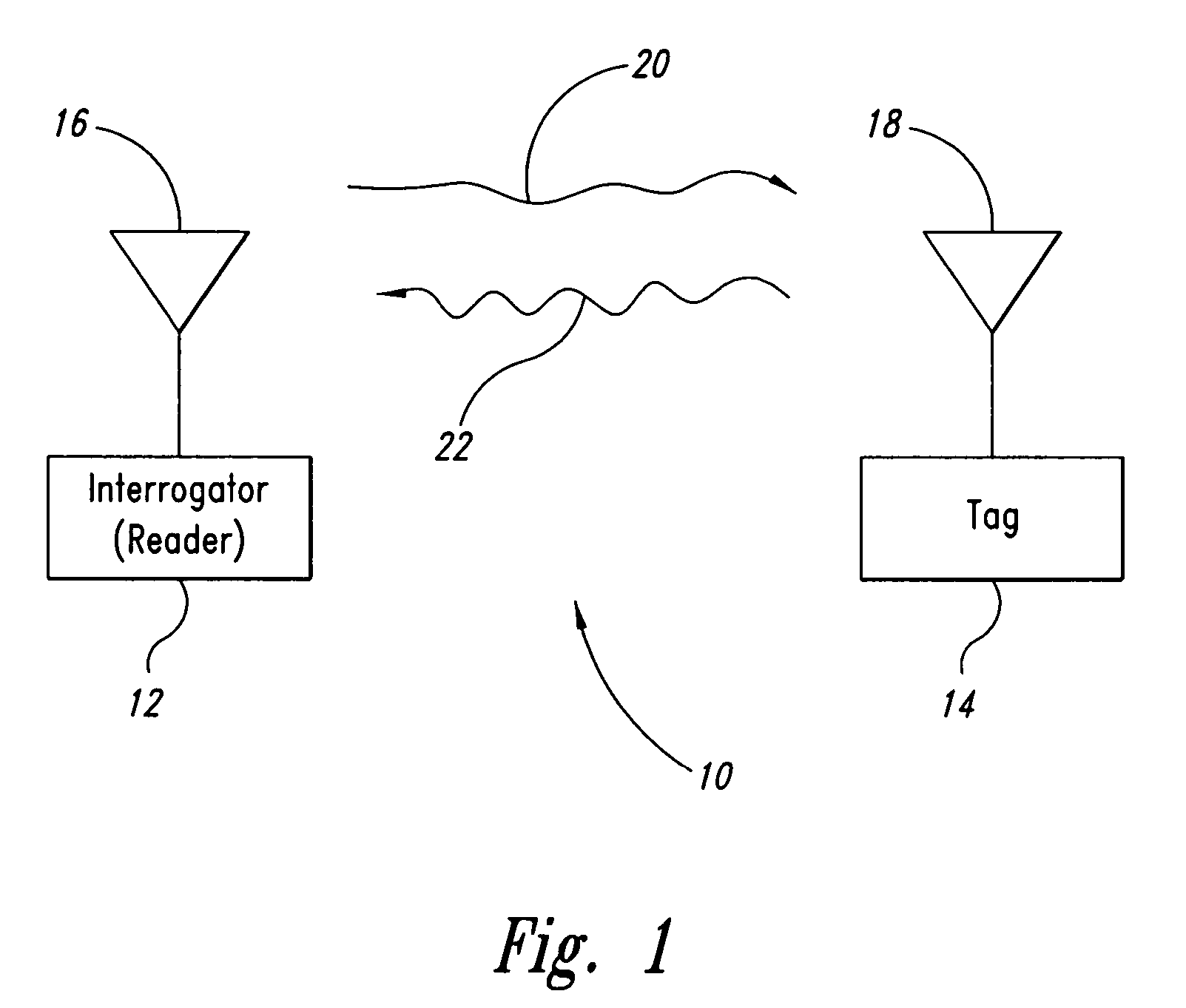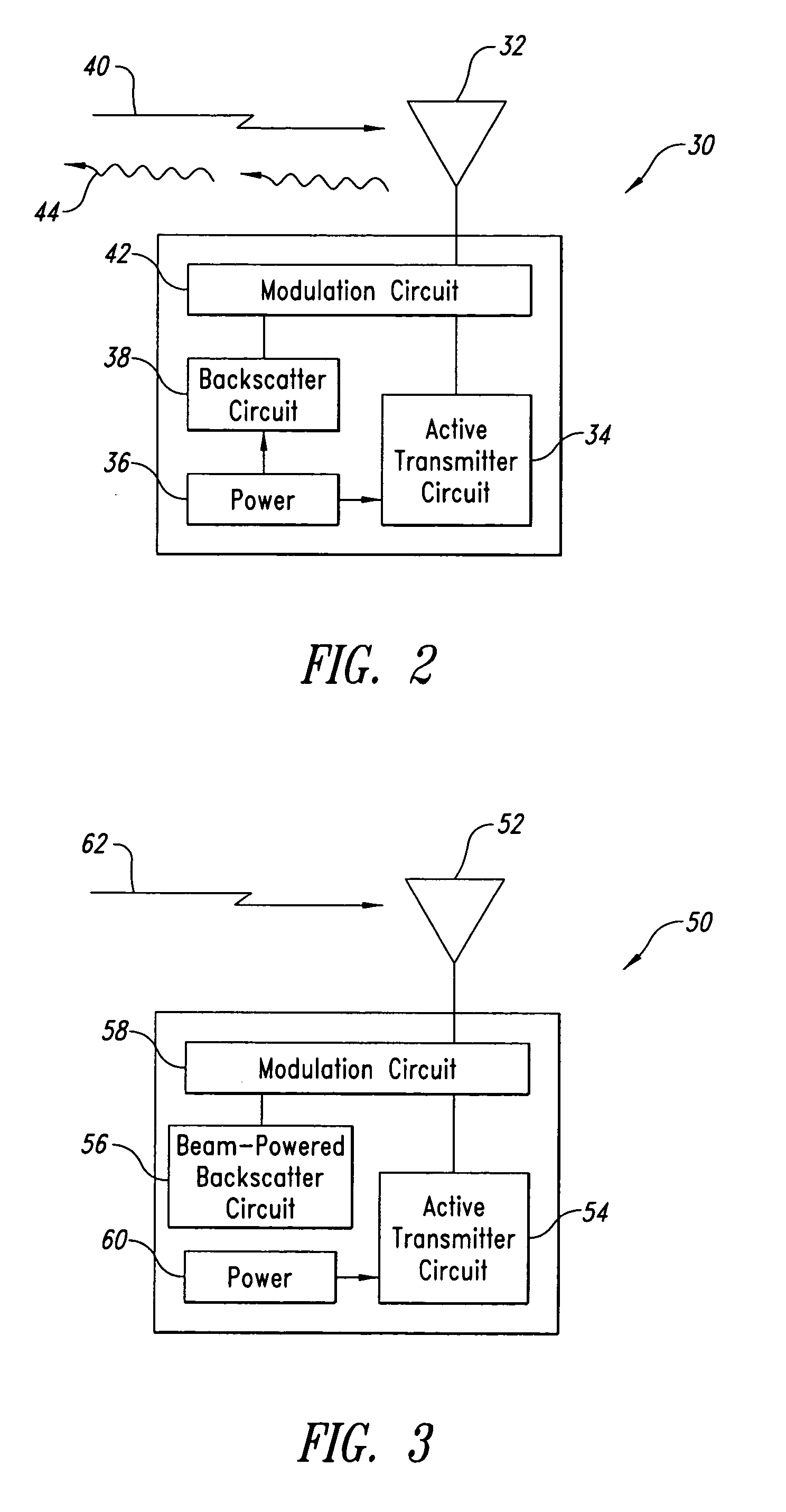Multi-mode radio frequency device
a radio frequency device and multi-mode technology, applied in the field of radio frequency identification devices, can solve the problems of insufficient range for some applications, limited range of battery-powered tags operating at 2,450 mhz,
- Summary
- Abstract
- Description
- Claims
- Application Information
AI Technical Summary
Benefits of technology
Problems solved by technology
Method used
Image
Examples
Embodiment Construction
[0019]The disclosed embodiments of the invention are directed to radio frequency communication between a transceiver and a transponder that facilitates reading of the transponder in multiple modes of operation, including an active transmission mode, a passive backscatter mode, and a semi-passive backscatter mode. It is known that an active tag contains five major portions, which are memory, logic, modulation control, transmitter, and battery. Typically, it is the transmitter that consumes the majority of battery energy.
[0020]In one embodiment of the invention, modulation control is enabled for an additional portion of the tag, in this case, a passive circuit. Thus, a passive circuit and an active circuit share portions of the same modulation function. However, the passive portion is now enabled much more often or even permanently for the backscatter mode of operation. As such, the tag can be read at a short range when in a backscatter mode with little or no drain on battery life. Th...
PUM
 Login to View More
Login to View More Abstract
Description
Claims
Application Information
 Login to View More
Login to View More - R&D
- Intellectual Property
- Life Sciences
- Materials
- Tech Scout
- Unparalleled Data Quality
- Higher Quality Content
- 60% Fewer Hallucinations
Browse by: Latest US Patents, China's latest patents, Technical Efficacy Thesaurus, Application Domain, Technology Topic, Popular Technical Reports.
© 2025 PatSnap. All rights reserved.Legal|Privacy policy|Modern Slavery Act Transparency Statement|Sitemap|About US| Contact US: help@patsnap.com



